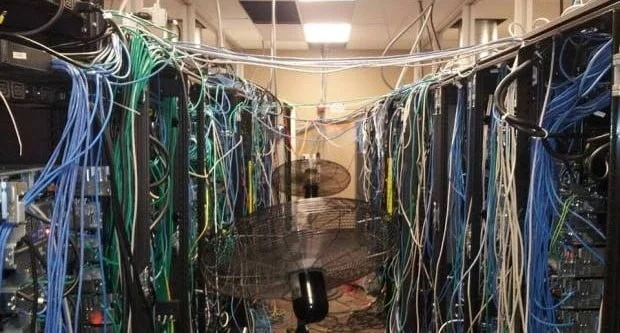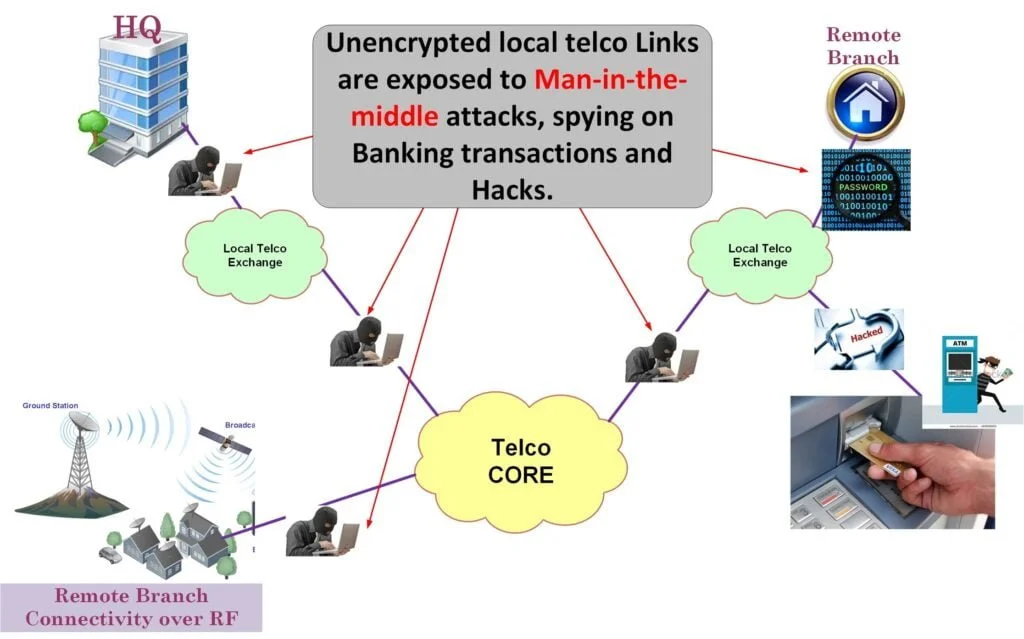
8 Valuable Lessons Learnt about Data Networks in the Pacific Islands
By Sprint Networks Superfast IT Networks No CommentsOver the last decade Sprint Networks have played a pivotal role in designing some of the largest enterprise Data Networks in the Pacific Islands. So we understand that IT is no longer just a cost centre; it is part of an organisation’s overall vision and must deliver tangible value to the business. We wrote this article as a value add for our customers and partners in Papua New Guinea and the Pacific Islands. We highlight 8 lessons and impediments we’ve seen over the years and the possible solutions you can implement.
1. There is no shortage in technology in the Pacific Islands, but a lack of capability within data networks to integrate these new technologies
Sometimes the most productive thing you can do is take stock of your network. Then take massive action - without change, there is no progress
Most companies in the Pacific Islands love to bring in new Tech, cutting-edge hardware and push new Apps, but their underlying infrastructure does not lend itself to make this a reality. Poor network designs and limited technical resources hamper this progress.
Solution: Audit your network – see what and where the bottlenecks that are limiting your technological progress.
Sometimes the most productive thing you can do is take stock of your network. Then take massive action – without change, there is no progress.
Also, getting a reputed third-party consultant would give you an honest and unbiased representation of your current network and even make possible recommendations for overall improvements.
2. 99% of all enterprise data centres are messy and disorganised!
At the beginning pursue progress instead of chasing perfection.
This alone is costing businesses much grief, money, incohesive IT teams, chaos within data centres (wasting time on troubleshooting) and massive latency within LAN environments.
Solution: Get organised! If your network is anything like the picture below, there is no way you could make it all neat and tidy over a single weekend. This should be a staged approach. Take on this task, piece by piece or to put it more technically segment by segment. At the beginning pursue progress instead of chasing perfection.
3. Poor ISP services
ISPs in the Pacific Islands are unreliable. But you already knew this :). We have seen many enterprises constantly loose network connectivity and go offline due to intermittent network failures over their existing service provider. This in turn impacts their business and hampers productivity.
Solution: use dual ISPs! This might sound counterintuitive, but the benefits are far greater than the costs (if the correct architecture and design is employed). This solution is fantastic for customers who are looking for agility, resiliency, redundancy and better up-time for their WAN links between the head-office and branch offices (given there are no power failures at site :)) Here’s a write up we did on “How to overcome Data Network limitations in the Pacific Islands“. Which outlines several options.
4. Poor Network designs
No one will care about your network as much as you do
In 2020 we’ve been extremely busy! Meaning we came across many a customer networks and spend time analysing numerous designs. Our conclusion, 9 out of 10 networks were badly designed. IT personnel working for these customers couldn’t even understand the existing logical network topology, how traffic was routed across the network or how to secure the network is. This was a real eye opener!
Solution: spend the time to understand your network – there is no substitute for this. “No one will care about your network as much as you do” empower IT teams by providing proper training and mentoring, also hire capable IT personnel with a good track record. Use state-of-the-art performance and network monitoring tools. Feel free to ask us how this could be done.

5. Companies use low-grade hardware in the enterprise (hubs, switches, routers and storage units)
If you expect great things from your network, then use production worthy standards based hardware
You cannot expect to run an enterprise using low-end consumer grade appliances and network peripherals and then expect enterprise grade service and quality. This will not happen! We’ve seen a lot of customers paying the price for this pennywise – pound-foolish approach. We’ve noticed that some customers did this through pure ignorance and some did it to cut costs.
Solution: if you expect great things from your network, then use production worthy standards based hardware. Don’t run to your local electrical store to purchase an 8 port no-name brand hub just because your Cisco switch ran out of ports. Feel free to ask us how this could be done.
6. Most customers opt for static routing over Dynamic routing technologies.
Static networks are just that – static! We understand there’s a place for static routing within an enterprise. But – if you want to grow and scale your network you need to consider running dynamic routing protocols.
Solution: consider dynamic routing protocols whenever it makes sense. If this is beyond the depths of your IT team, get professional help.
7. Unencrypted WAN data circuits
Most customers expect the service provider (i.e. the local telco) to be responsible for providing security and WAN encryption. This is expecting way too much from a local telco, who’s most likely struggling with their own security woes. Besides, how can you expect a third-party to secure your own backyard. This is not best practice.
True story: We once had a CFO dismissing the idea of paying for WAN security as he couldn’t accept the fact of paying a professional services company to provide this service. Long story short, the senor IT manger vetoed the CFO’s suggestion. We were delighted – sanity had prevailed.

Solution: So, what can you do to safeguard data network right now – like today? The simplest solution is encrypting your data links. You don’t need to go buy any fancy firewall or build dedicated VPNs (although these are very valid options), but use enterprise grade secure tunnelling. You can do this today, if you have the right tools and people. Feel free to ask us how this could be done.
8. No AAA (Authentication - Authorisation - Accounting) in the network
What is AAA? AAA is a term for a framework for intelligently controlling access to computer resources, enforcing policies, auditing usage, and providing the information necessary to bill for services. These combined processes are considered important for effective network management and security.
This is a bigger issue than most people think, when there is no governance for network administration and authorisation any Tom, Dick and Harry can access your network with any local access or account. For example, Tom can use Harry’s access and visa versa. This should concern any ICT manager, because of the lack of access control.
Also, say you have 250 devices in your network and 10 administrators, this would mean 10 local accounts across 250 devices. This is Not practical and does not scale. Believe it or not this is how most companies operate in the Pacific Islands. It gets worse, say if a user losses their username or password. The username and password would then need to be re-created on all the devices. This is very common too.
Solution: Integrate a proper TACACS or RADIUS server – where all of AAA can be centralised and consolidated. It would also help administrators to add or remove uses with varying levels of access privileges.
Conclusion
Good Networks are not adopted automatically. They must be designed into practice with brilliant architecture.
So there you have it! Our top 8 lessons we encountered around data networks in Pacific Islands. We’re sure some of our clients reading this will be smiling sheepishly. But, truth be told – enterprises having one or more of the issues described here are the once that struggle the most, complain the most and are unable to keep up with business demands. Let’s hope in 2021 these issues will be addressed..
